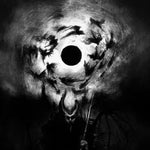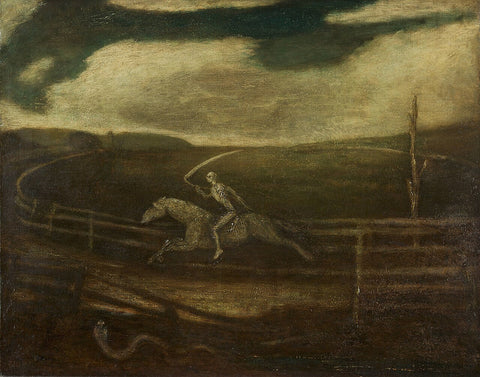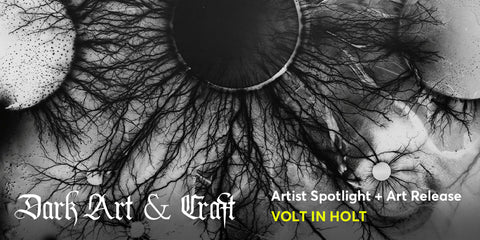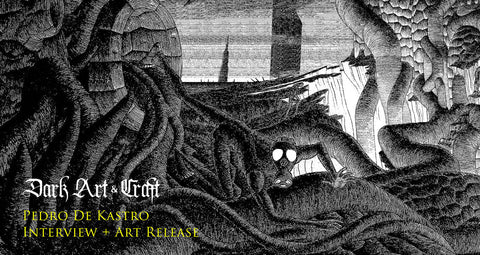The Dark Ages into the Renaissance
During the dark ages - a historic period following the decline of the Roman Empire and before the European Renaissance Art began reflecting the various conflict, violence and disease related tribulations affecting civilization. As the Renaissance developed these unique Artistic traditions continued to flourish but with new dark direction.

Jan Van Eyck, The Last Judgment, oil on panel detail of lower Hell sections ca. 1440–1441. Image via Wikimedia Commons considered a masterpiece of the early Northern Renaissance
Diabolical Artwork created by the Limbourg Brothers, “Lucifer Torturing Souls as well as Being Tortured Himself in Hell” from Les Très Riches Heures du duc de Berry. The work is a colorfully illustrated judgment and Hell scene created in 1412-16 with Tempera on vellum. The Dark Art & Craft framed reproduction print.
Hieronymus Bosch
Hieronymus Bosch was an early Netherlandish Artist who created vast imaginary landscapes filled with demons, monsters and humans. Bosch's surreal often horrific creatures are an early example of the symbolic rendering of evil in painted Art. The Artist's fantastical worlds and hellscapes foreshadowed the dark elements that would soon fill canvases across Europe.

Image via Wikipedia The Garden of Earthly Delights in the Museo del Prado in Madrid, c. 1495–1505, attributed to Hieronymus Bosch

The temptation of Saint Anthony attributed to Hieronymus Bosch between 1523 and 1544 Palácio das Necessidades, Lisboa, 1913 Netherlands Institute for Art History
Pieter Huys
Pieter Huys a Flemish renaissance painter (c.1519–c.1584) brought his own brand of terrifying creatures and darkness created in his Antwerp workshop. Taking reference from Bosch, Huys complicated scenes include hundreds of angles, demons, half-humans and all manner of diabolic creatures.

The Inferno, Pieter Huys 1570 ad - Image via wikipedia commons
The Temptation of Saint Anthony Attributed to Pieter Huys CC0, oil on oak painting MET collection. The Dark Art & Craft reproduction print.
Dark Renaissance Paintings
As the renaissance took hold in Northern Italy Artists strived to move beyond the churches dogma - utilizing classic mythology, violent imagery and passionate portrayals of the human condition. Masters such as Caravaggio took Chiaroscuro (Italian for "Light-Dark") and brought bold contrast and dramatic subjects into the Art world. As the Renaissance progressed throughout Europe strong moral stories, crime, revenge and war became commonplace in the Artists catalog inspiring generations to tread a similar dark path.

Caravaggio, Judith Beheading Holofernes image via wikipedia a dramatic and gruesome concept by the Master painter

The Crucifixion of Peter a fine example of Chiaroscuro by Caravaggio (1600 ad) Image via wikipedia

Magdalene with the Smoking Flame, by Georges de La Tour, c. 1640, notice the human skull a reference to human morality
Salvator Rosa

Witches at their Incantations is a painting by Salvator Rosa , c 1646, © The National Gallery, London

Witches at their Incantations, lower left detail - image via pinterest.at
Rosa was known as a "perpetual rebel" for creating his now well-known shadow covered night scenes. The Artist's fiery and flamboyant character is documented and lent to his storied reputation in Italy and abroad. As a painter, his "unorthodox and extravagant" paintings of a grotesque nature depicted topics often thought taboo during the era. Bringing witchcraft, divination and morbid themes to his work Rosa developed an early visual stage for Dark artwork.
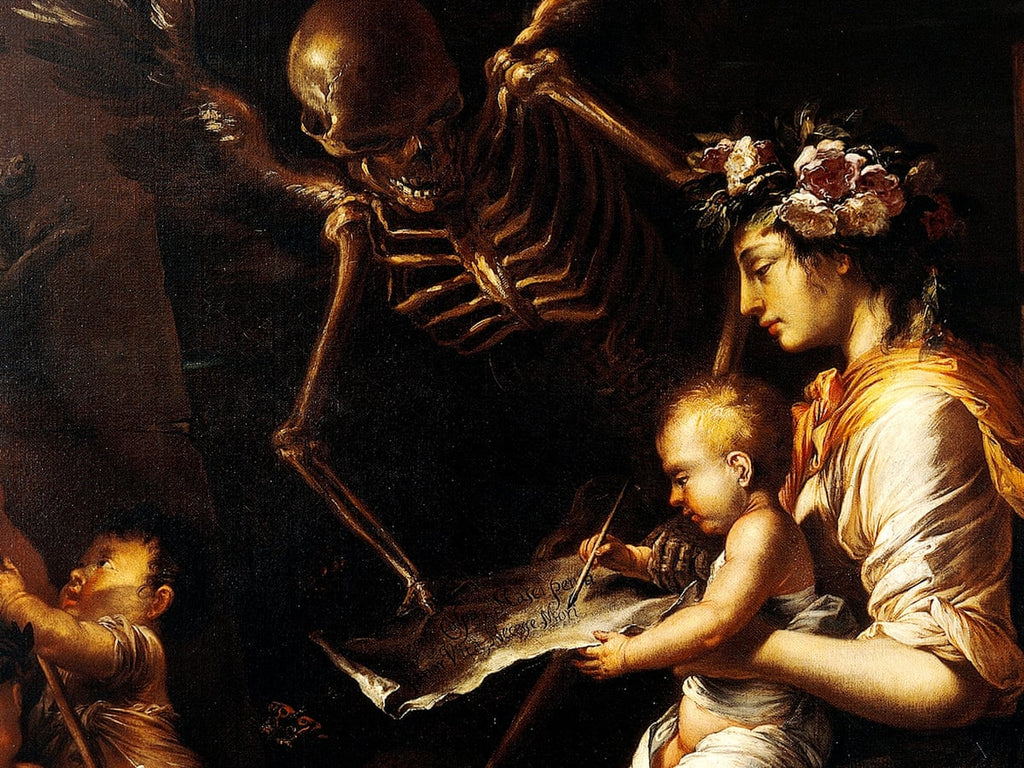
Detail - Salvator Rosa - Human Frailty (1656) image via Reddit

Witches at their Incantation, Salvator Rosa - circa 1646 (detail)
Artemisia Gentileschi
Artemisia Gentileschi an Italian Baroque Artist (1593 – c. 1656) was initially inspired by the renaissance master Caravaggio. Her detailed artworks include allegories, violence and myth - a striking dark palette and a continuation of morbid imagery in European Art.
Judith Beheading Holofernes Artemisia Gentileschi Framed Poster. This second version painting, executed by Artemisia Gentileschi in Florence c. 1620 is one of the bloodiest and most gruesome depictions of the intense scene. The Dark Art Artemisia Gentileschi print.
The Northern Renaissance
In northern Europe, Flemish painter Pieter Bruegel the Elder created landscapes inspired by plague and the suppressed often brutal peasant life.
The Triumph of Death Pieter Bruegel the Elder image via wikimedia commons CC0. Available print through Dark Art & Craft.

Dulle Griet, by Pieter Brueghel, oil on panel depicting an army of women pillaging hell Museum Mayer van den Bergh in Antwerp shows an anthropomorphic "Mouth of Hell"
The Crucifixion; The Last Judgment (Hell detail lower right panel) Jan van Eyck (Netherlandish, Maaseik ca. 1390–1441 Bruges) and Workshop Assistant Oil on canvas transferred from wood. CC0 1.0 Universal (CC0 1.0) Public Domain Dedication Met collection.






